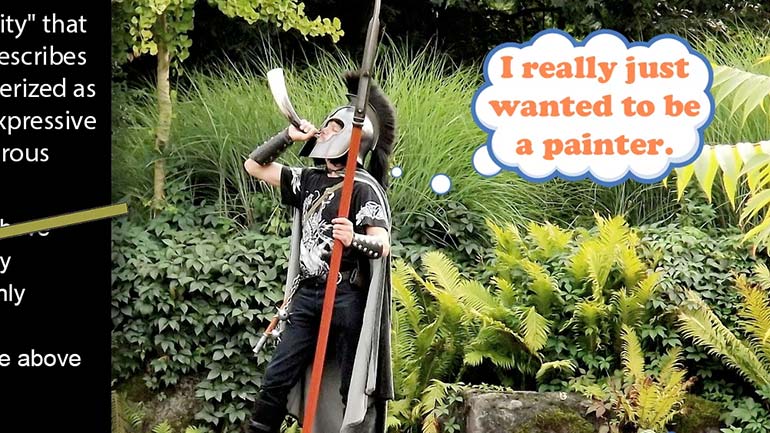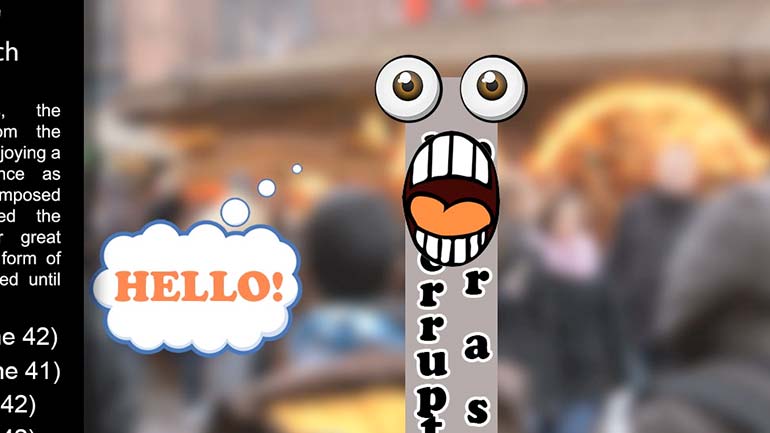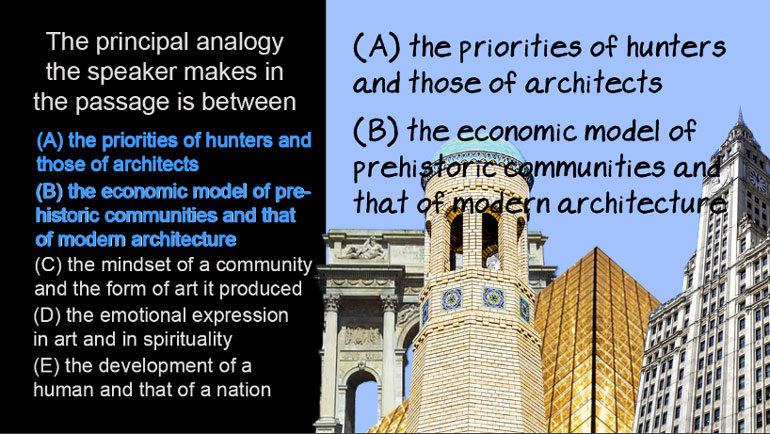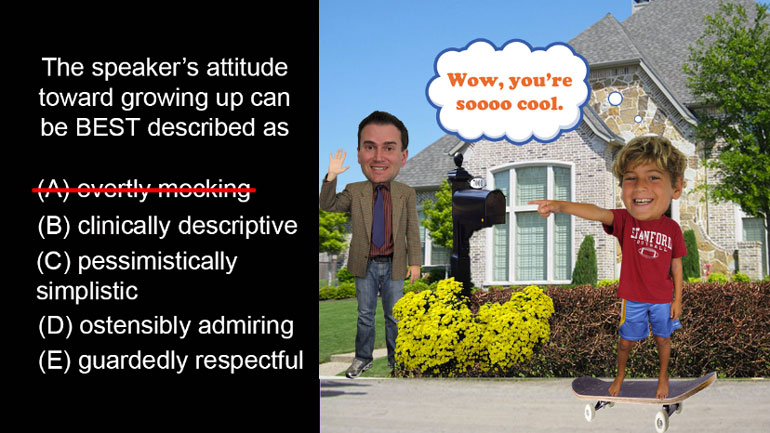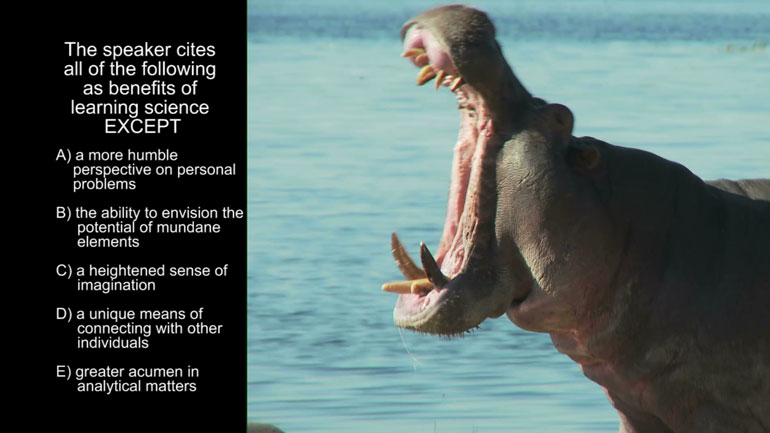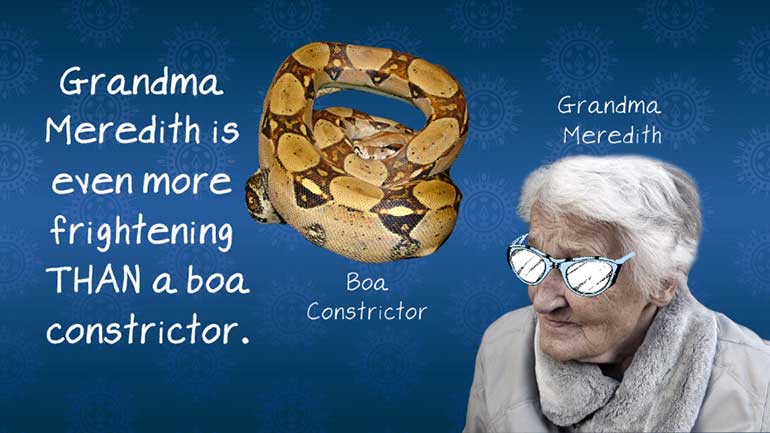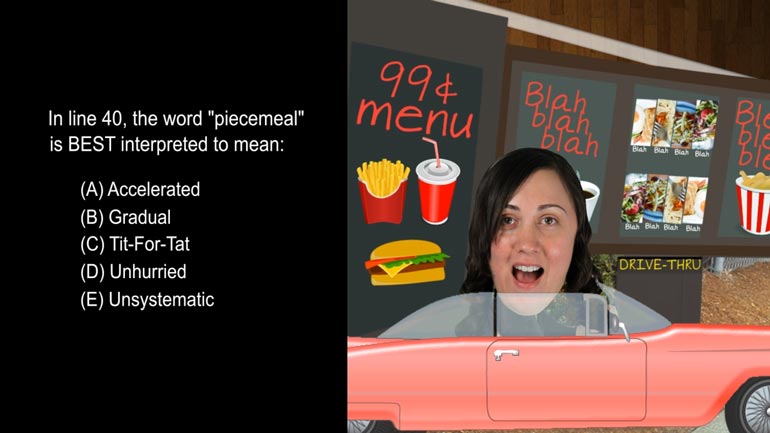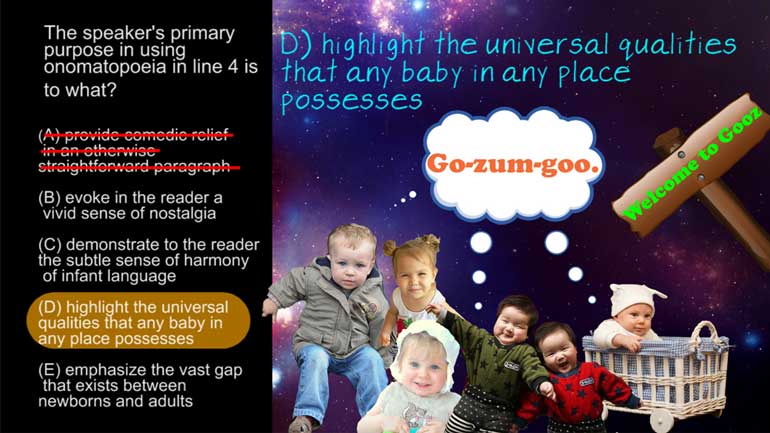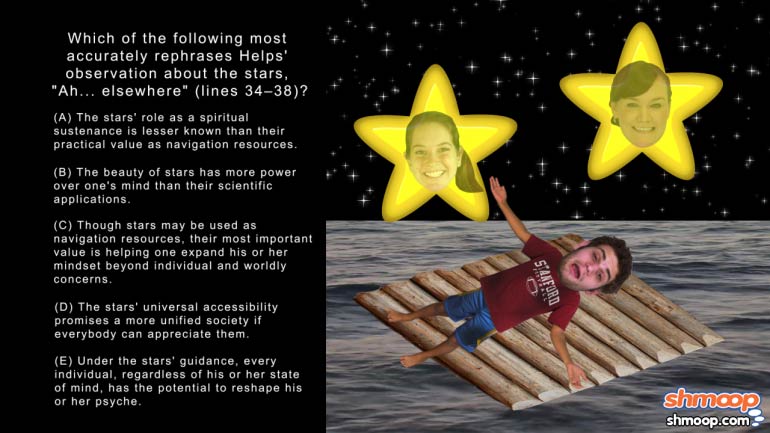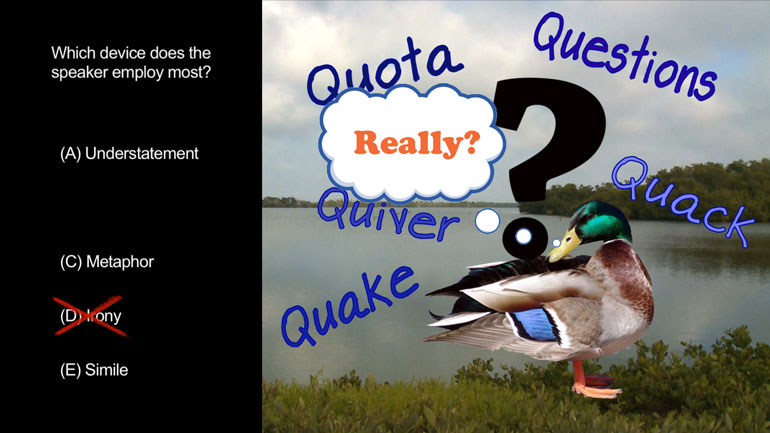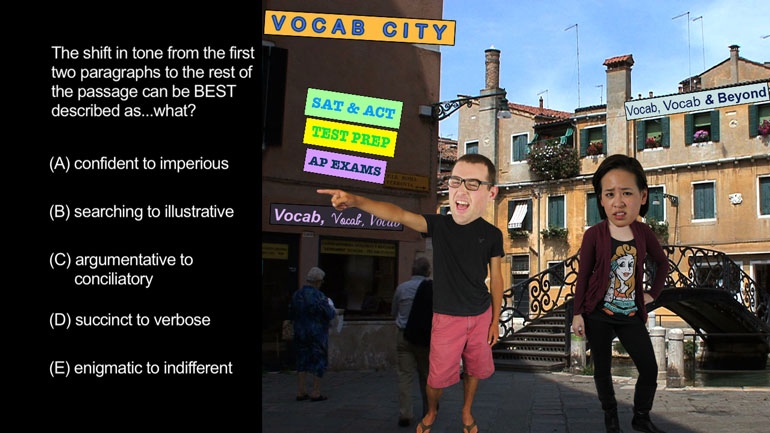ShmoopTube
Where Monty Python meets your 10th grade teacher.
Search Thousands of Shmoop Videos
Playlist AP® English Language and Composition 17 videos
AP® English Language and Composition: Comprehension Drill 1, Problem 1. The speaker would agree with all of the following statements except what?
AP English Language and Composition: Comprehension Drill 1, Problem 10. The metaphor used in lines 62 and 63 is best interpreted to mean which...
AP English Language and Composition: Comprehension Drill 1, Problem 3. What can the "personality" that the speaker describes be characterized as?
AP English Language and Composition 1.5 Comprehension 251 Views
Share It!
Description:
AP English Language and Composition: Comprehension Drill 1, Problem 5. The principal analogy the speaker makes in the passage is between what and what?
Transcript
- 00:00
[ musical flourish ]
- 00:03
And here's your Shmoop du jour, brought to you by mud pies,
- 00:06
the breakfast of champions.
- 00:08
Well, four-year-old champions, anyway.
- 00:10
All right, well, check out the following passage.
Full Transcript
- 00:12
Blah, blah, blah... [ mumbles ]
- 00:17
[ mumbling continues ]
- 00:23
[ further mumbling ]
- 00:29
[ more mumbling ]
- 00:37
All right, here we go.
- 00:38
The principal analogy the speaker makes in the passage is between
- 00:41
what and what? And here are the potential answers.
- 00:47
And let's go.
- 00:49
An analogy is a comparison between two ideas or things.
- 00:52
They're usually a little more complicated
- 00:54
than similes and metaphors,
- 00:55
which are also in the comparison business.
- 00:57
In fact, similes and metaphors are often part of
- 01:00
a larger analogy.
- 01:01
Here's an example.
- 01:03
We start with a simple simile: life is like a monkey.
- 01:06
But then it gets more complicated.
- 01:07
Sometimes it smiles and gives you hugs.
- 01:10
But other times it randomly bombards you with poop.
- 01:13
Boom. Analogy.
- 01:15
Well, let's take a look at what analogy our speaker is making.
- 01:18
The key here is that the question is looking for the overarching
- 01:21
analogy of the entire passage,
- 01:23
so anything that's too specific can go.
- 01:26
Choices A and B are both easy to eliminate for this reason.
- 01:29
Both mention architecture as a main point of comparison.
- 01:32
While the author does give a shout-out to the Romans
- 01:34
for their architectural innovation, the passage
- 01:36
isn't all that concerned with architecture in general.
- 01:39
Oh. 'Cause this isn't worth your time. [ buzzer ]
- 01:42
We can get rid of choice D, as well.
- 01:43
To the disappointment of Sunday school teachers everywhere,
- 01:46
the author doesn't mention spirituality
- 01:48
anywhere in the passage.
- 01:49
And I tried so hard with him... [ buzzer ]
- 01:52
Option C is the closest so far. The complicated relationship
- 01:55
between the art and the artist is discussed,
- 01:58
but there's something bigger going on in this passage.
- 02:00
It's like she doesn't even see me anymore.
- 02:02
[ buzzer ] The correct answer is E.
- 02:04
The author takes us through all this goo-zum-goo
- 02:07
mud pie talk to set up the analogy that
- 02:10
nations are not different from children.
- 02:12
He's not saying that nations act like kids,
- 02:14
though that's probably true, as well.
- 02:16
Instead, the author is saying that Western civilization's
- 02:19
relationship with art
- 02:20
waxed and waned in the same way a kid's does.
- 02:24
We were all primitive with it in the caveman days,
- 02:26
perfected our skills with the Greeks, then had to grow up
- 02:29
and focus on practical things during the Roman era.
- 02:32
Personally, we take caveman mudpie over Roman era
- 02:35
boring job any day.
- 02:38
[ splat ] [ groan ]
Related Videos
AP English Language and Composition: Passage Drill Drill 1, Problem 2. What is the speaker's primary purpose in using onomatopoeia in line four?
AP English Literature and Composition 1.1 Passage Drill 7. The primary purpose of this passage is what?
Wishing upon a star may help you pass your AP English Language and Composition test, but answering this question would be a safer bet.
Take a look at this shmoopy question and see if you can figure out which device the speaker employs the most.
Feel like shifting gears and answering a question about shifting tones? We've got you covered. Take a look at this question and see if you can foll...


